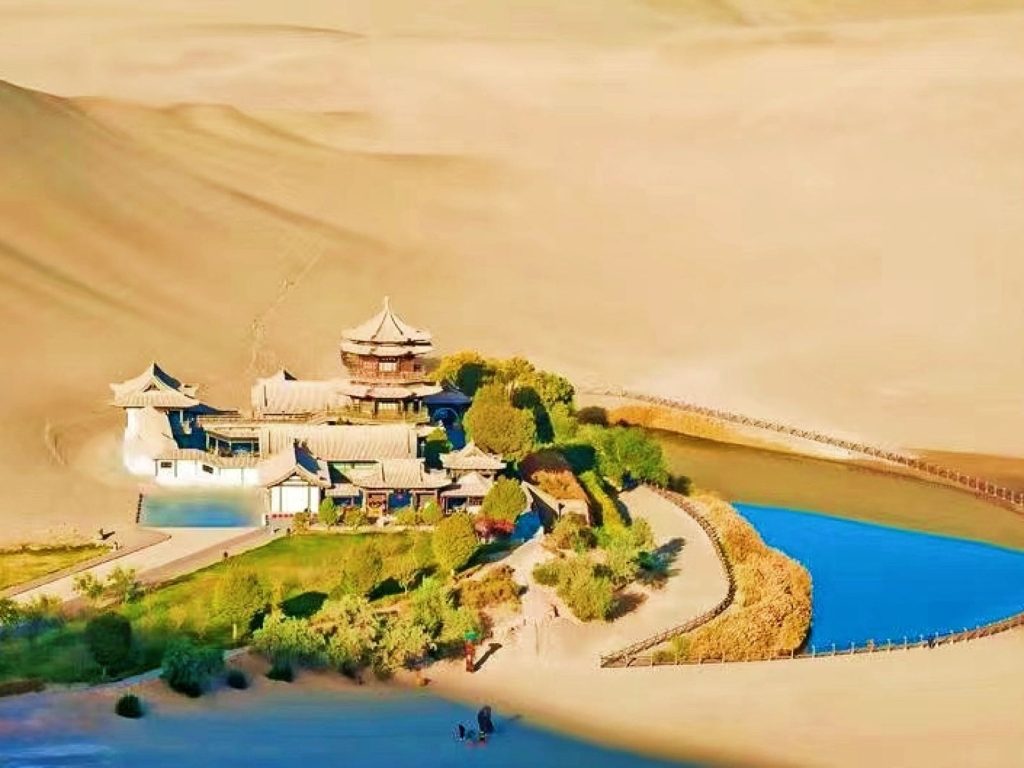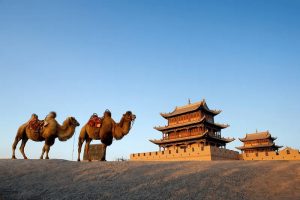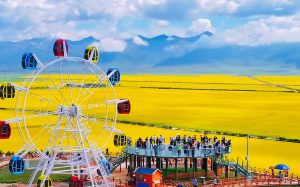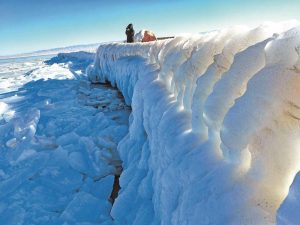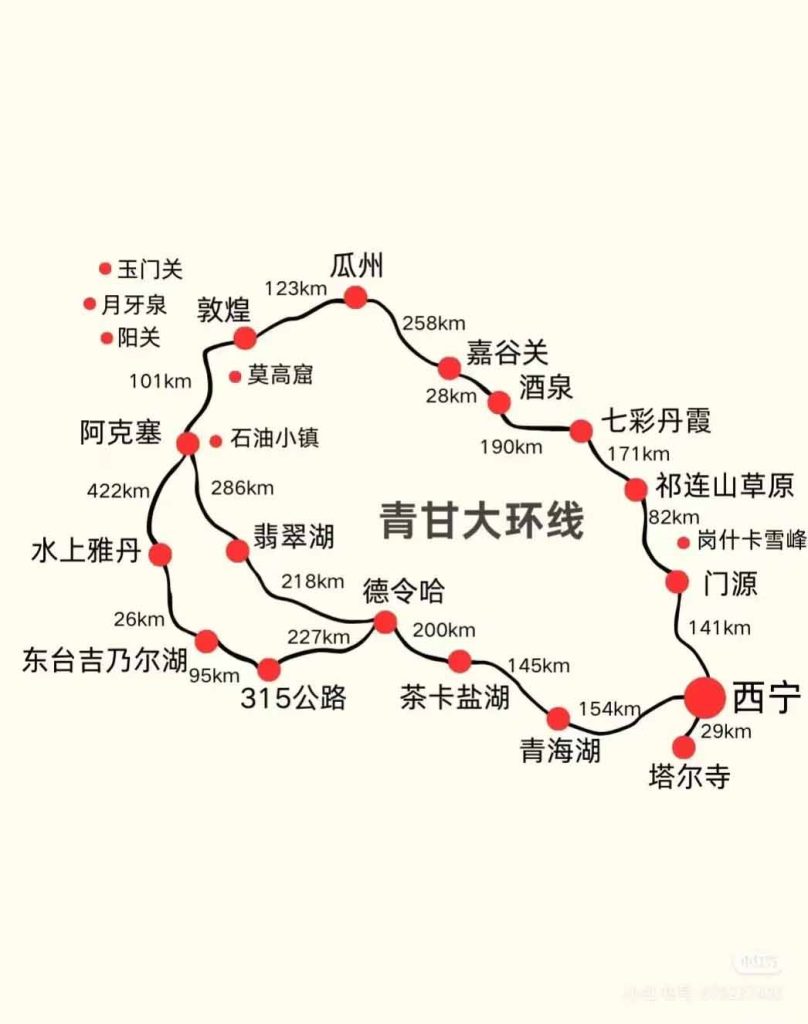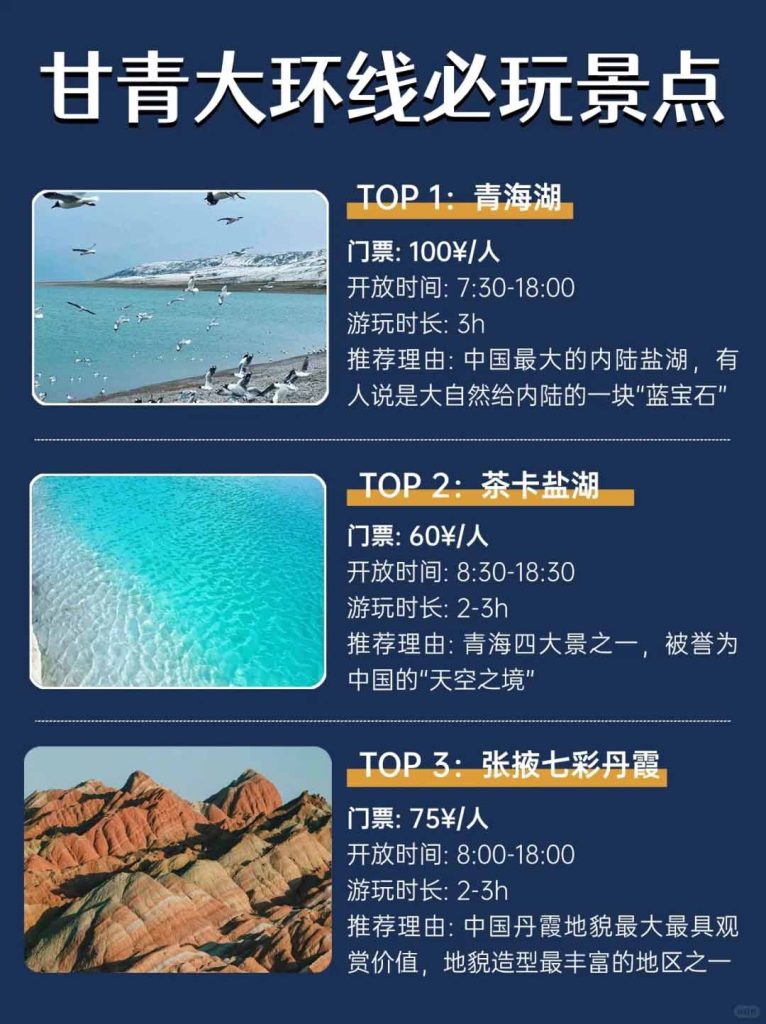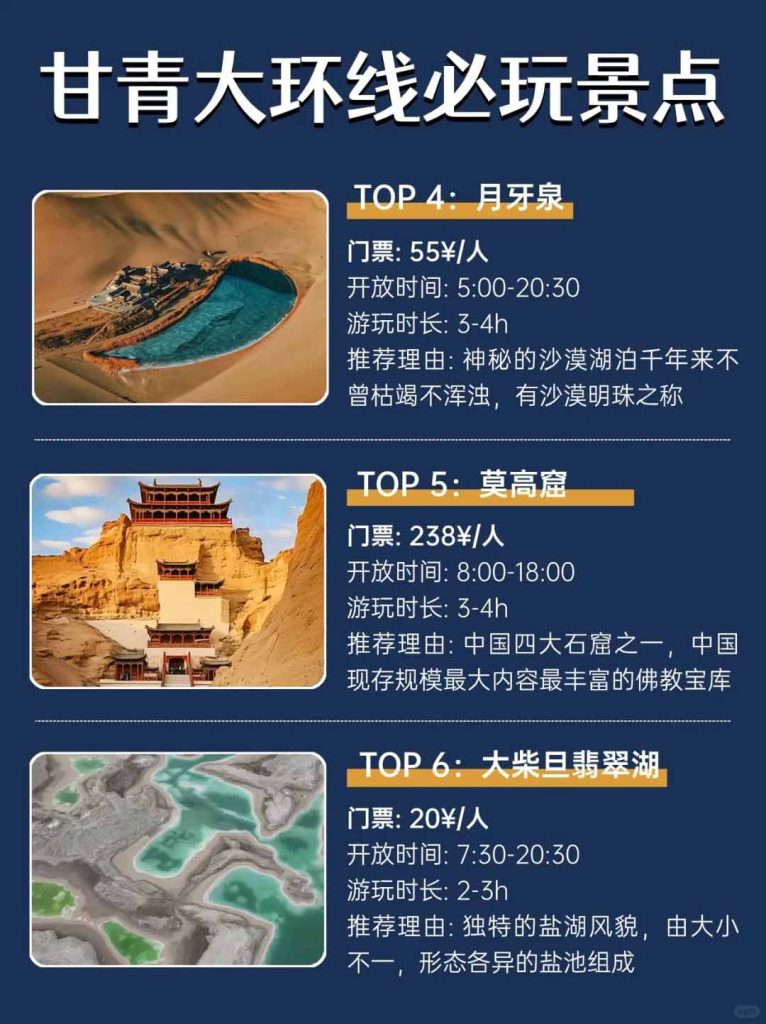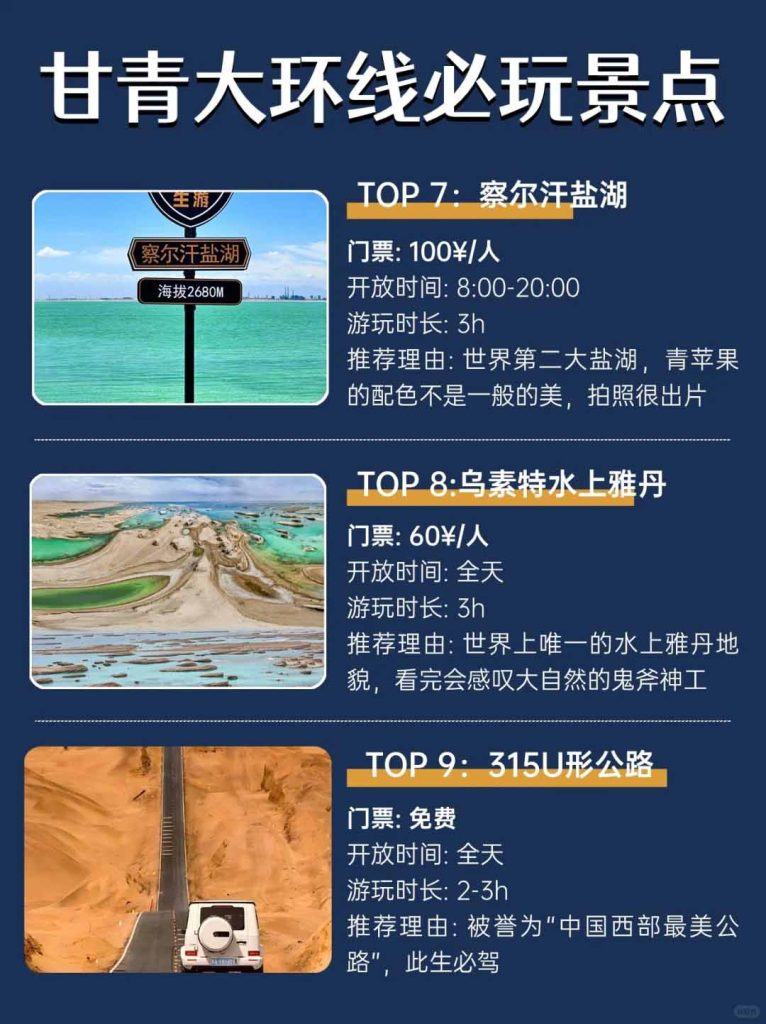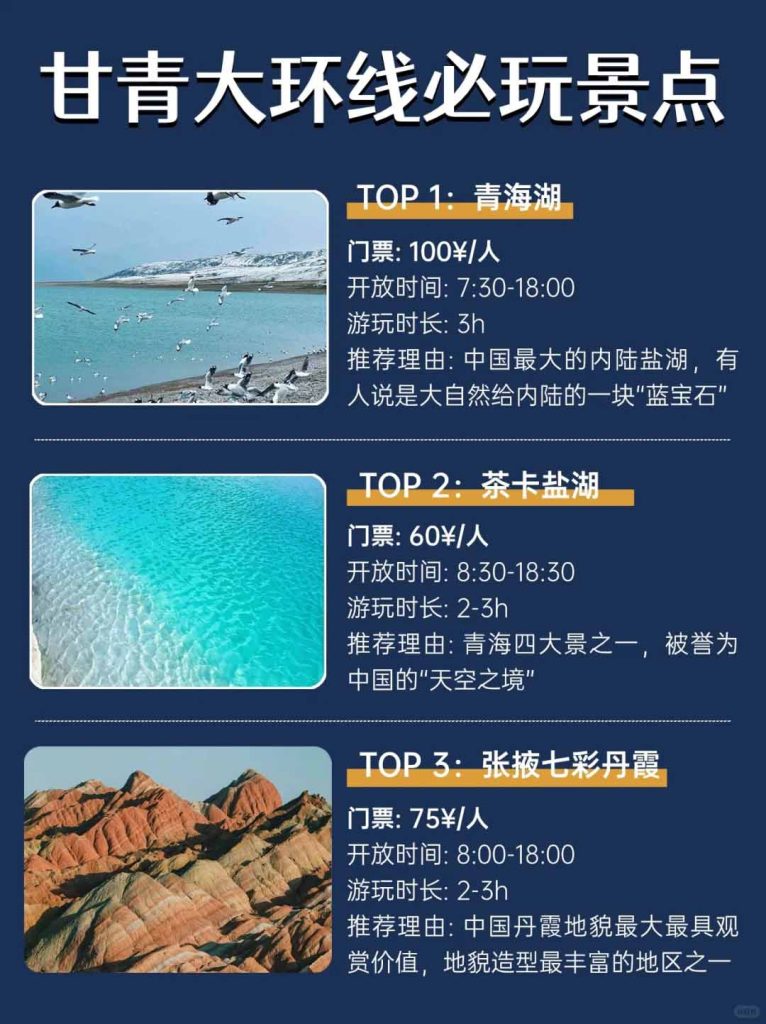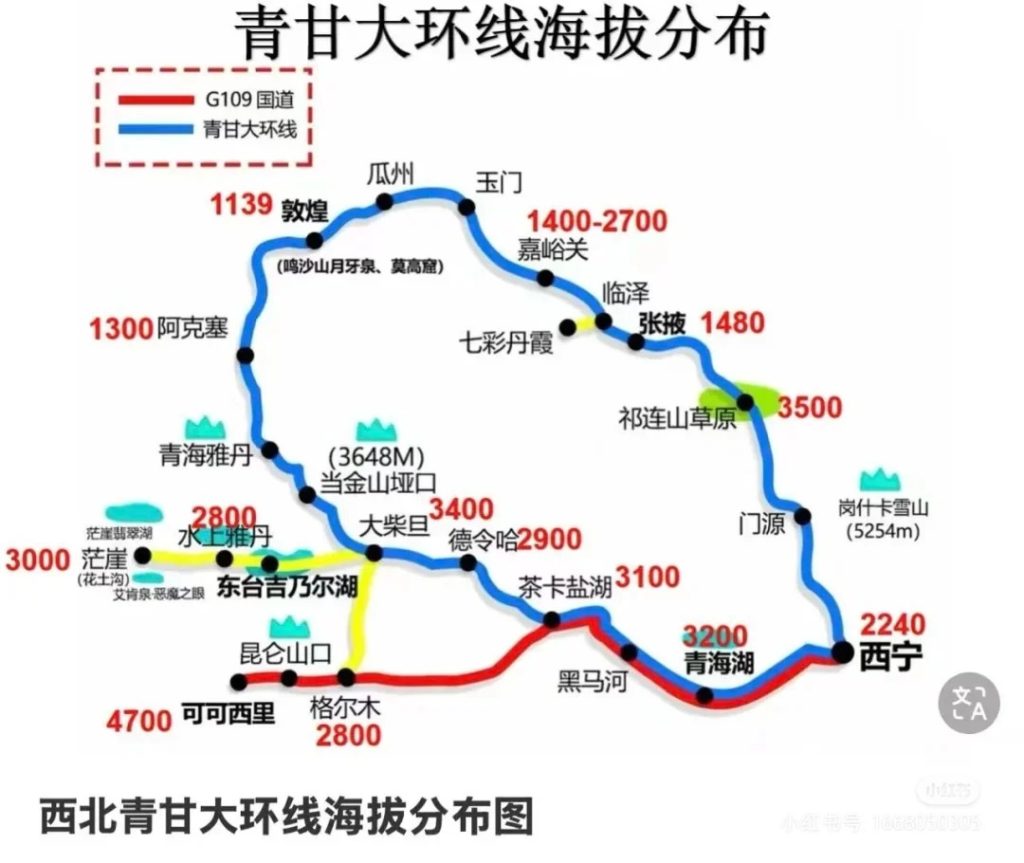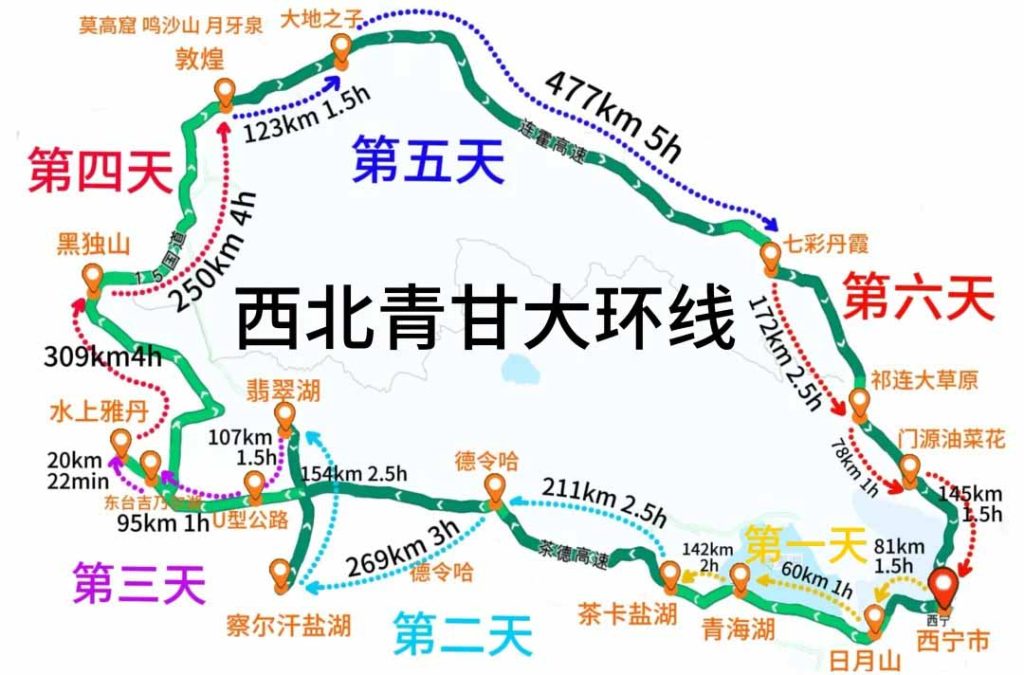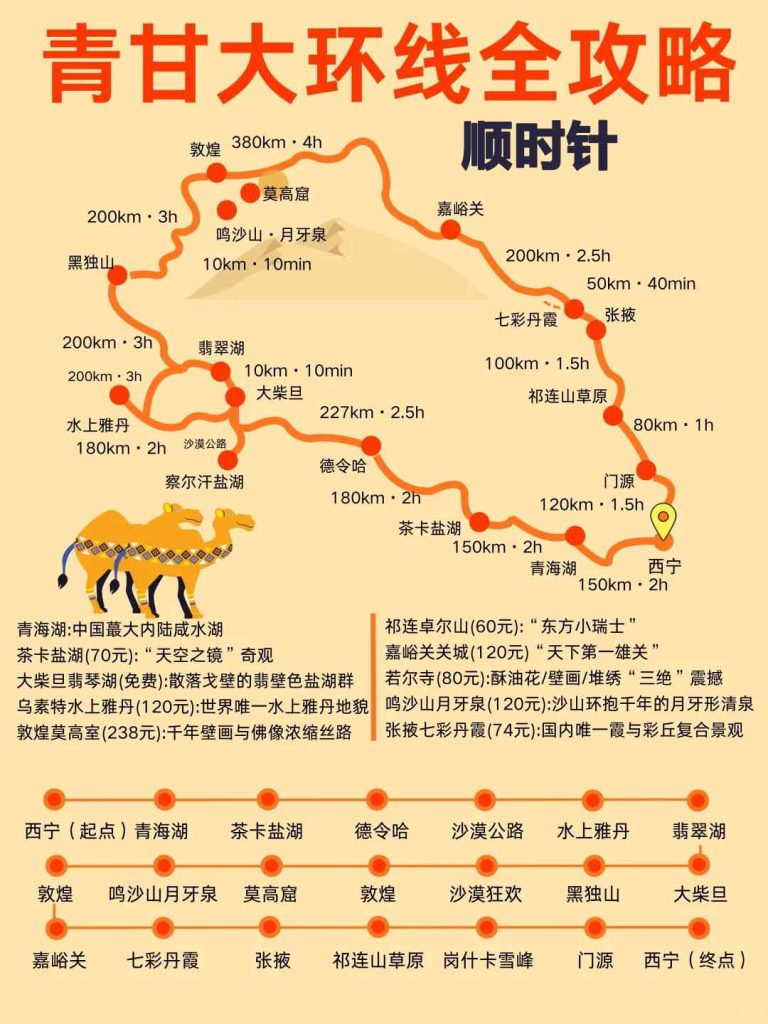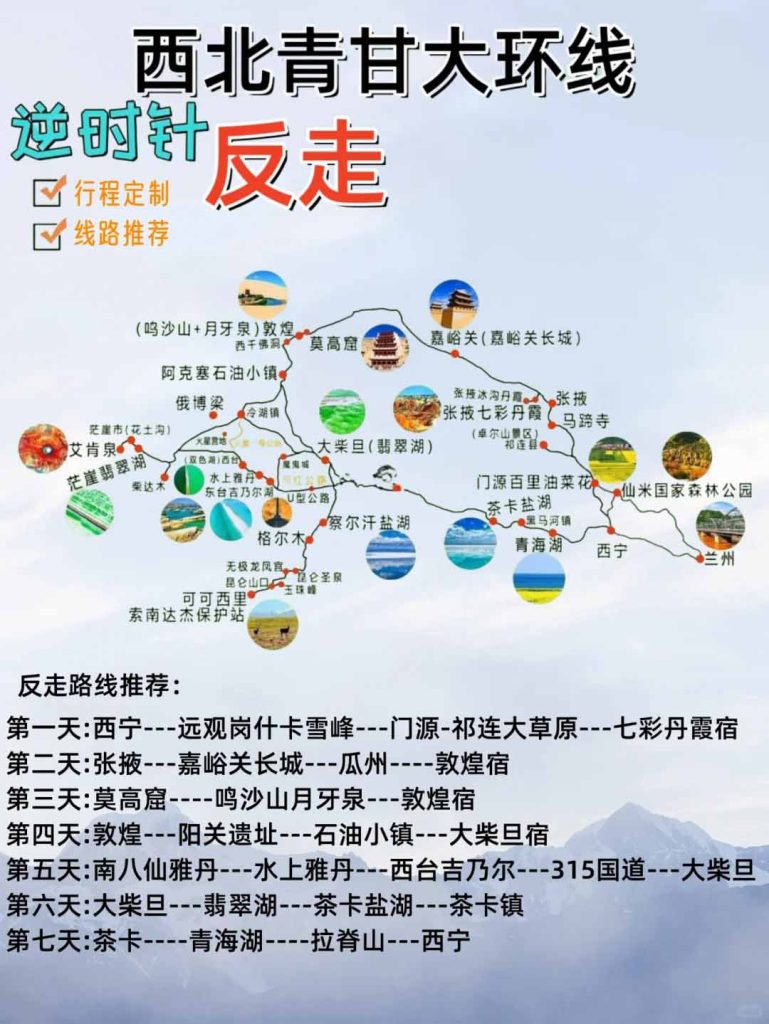The Qinghai-Gansu Grand Loop is one of China’s most iconic northwest self-drive routes, connecting natural wonders and cultural treasures across Qinghai and Gansu provinces. Spanning approximately 2,800 kilometers, it is ideal for an in-depth 7-10 day journey. The route begins in Xining, passing through Qinghai Lake, Taka Salt Lake, Qilian Mountain Grasslands, and the rapeseed flower fields of Menyuan. It then enters Gansu’s Zhangye Danxia Landform Geopark, traverses Biandukou Gorge, Jiayuguan Pass, the Mogao Caves in Dunhuang, and the Singing Sand Dunes with Crescent Moon Spring. Continuing through Guazhou and Delingha, it finally returns to Xining, forming a complete loop.
The journey showcases breathtakingly diverse landscapes—highland lakes, snow-capped mountains, grasslands, Gobi deserts, Yadan formations, millennia-old grottoes, and ancient frontier cities—earning it the title of “a road you must travel in your lifetime.” July-August offers peak beauty, with Menyuan’s golden fields contrasting against Qinghai Lake’s azure waters. Autumn’s crisp skies make it ideal for exploring Dunhuang’s cultural treasures, while winter offers the desolate grandeur of desert smoke rising over the dunes. Whether you’re a photography enthusiast, a cultural explorer, or a nature traveler, this route promises profound spiritual resonance and awe-inspiring moments. The Qinghai-Gansu Grand Loop transcends mere geography—it is a visual feast and spiritual pilgrimage that spans time and space.
- Menyuan rapeseed Flower
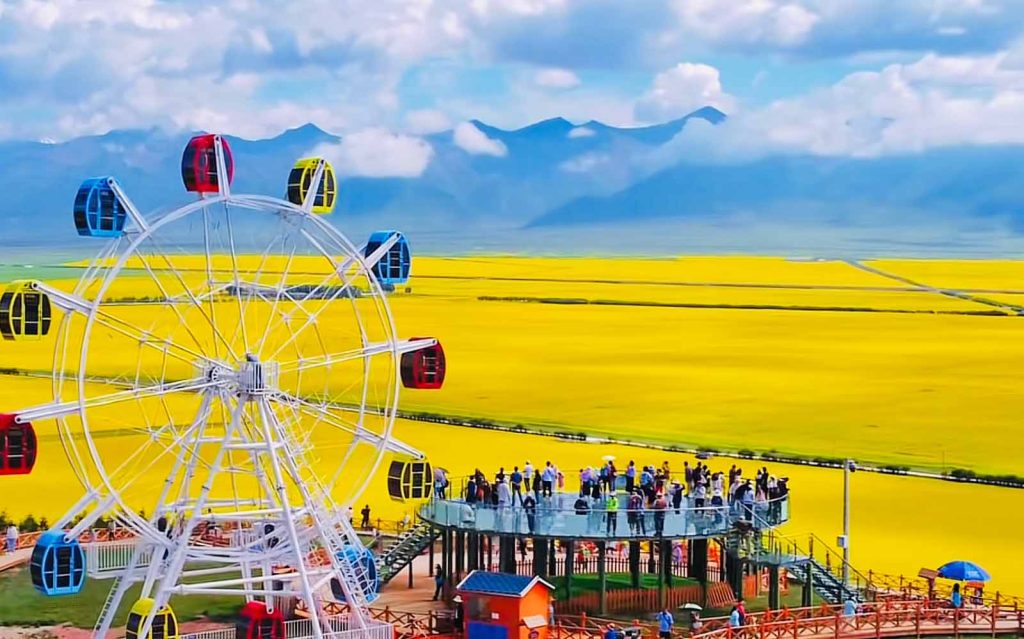
- Film and television Ruins in the Gobi: Akse Oil Town
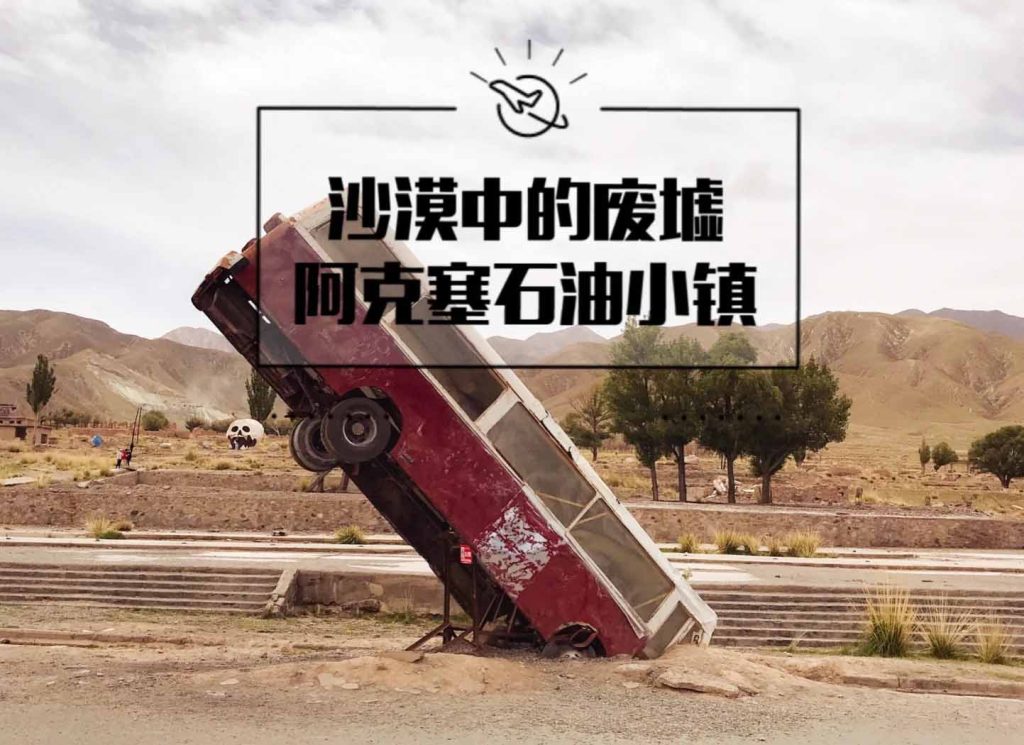
- Devil City of the Southern Eight Immortals
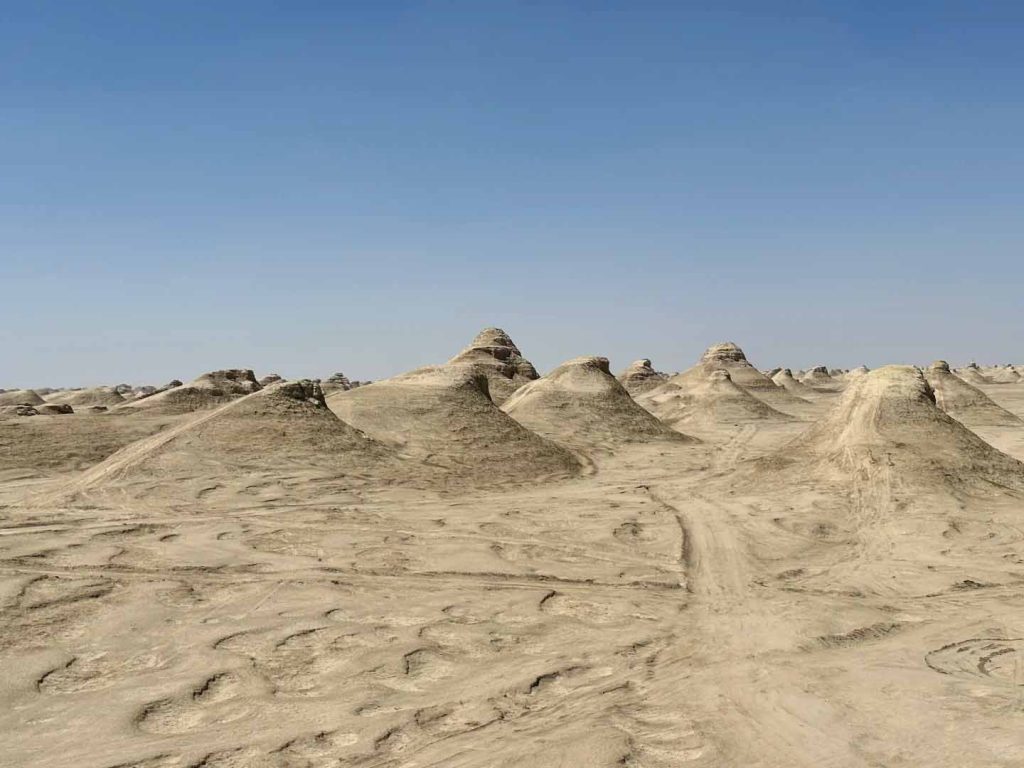
- Plateau Sapphire-Qinghai Lake
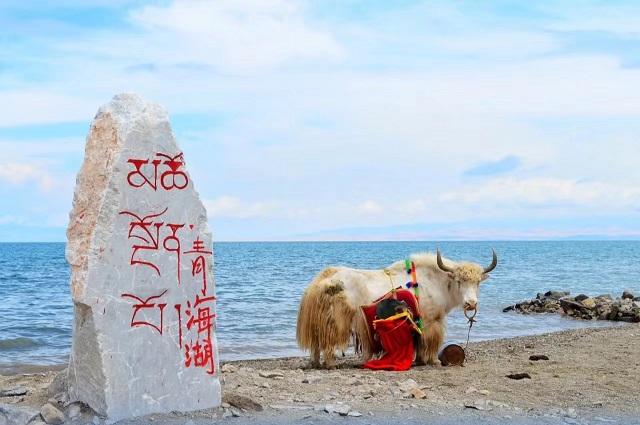
- Heavenly Realm Qilian Mountain Grassland
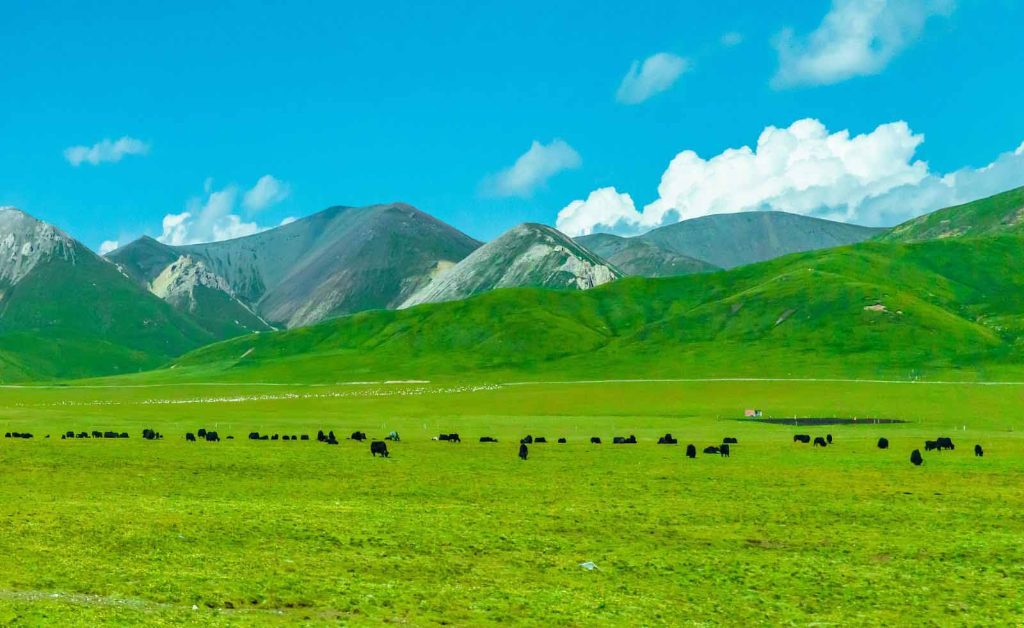
- Mars One Highway: An Interstellar Journey beyond the Earth
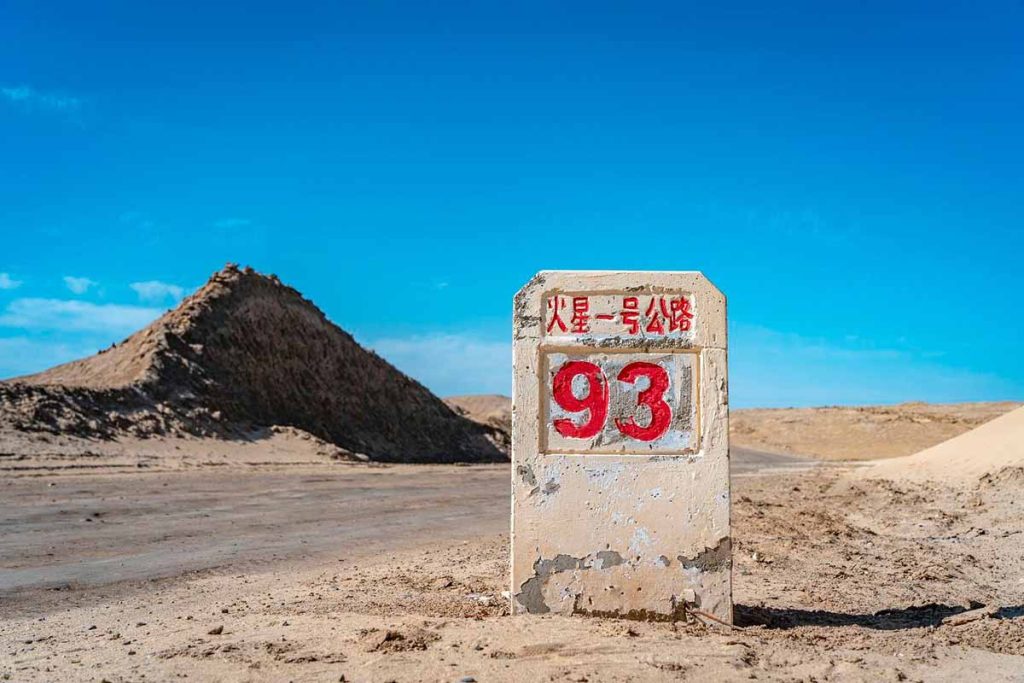
- Caka Salt Lake: China’s “Mirror of the Sky”
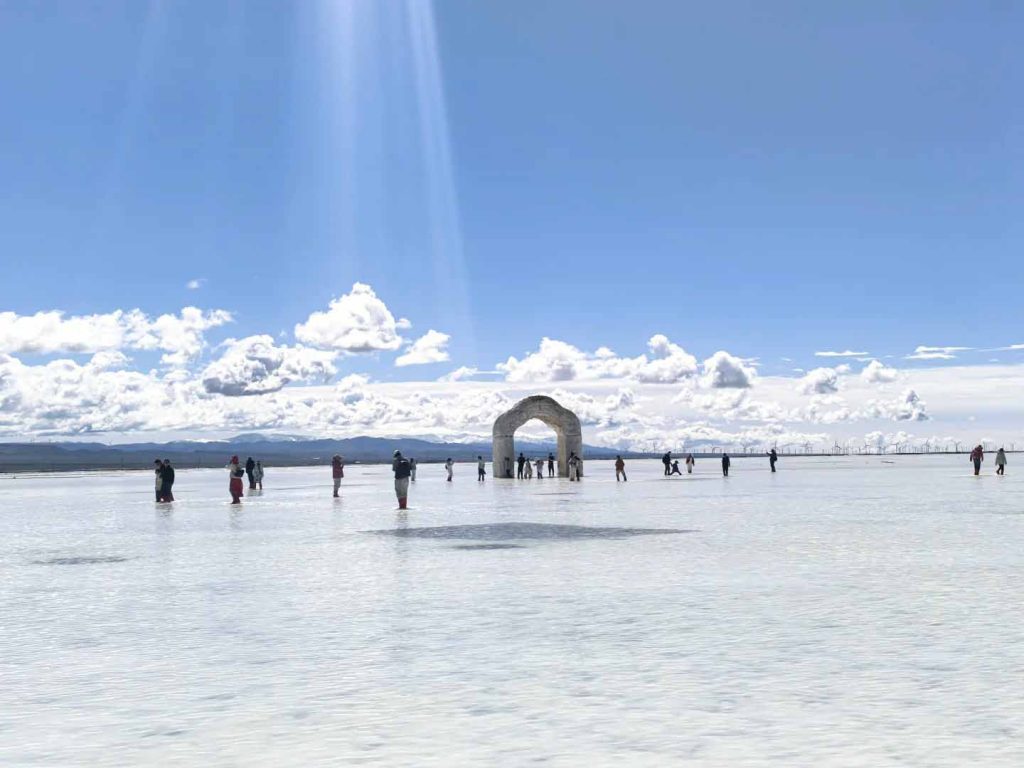
- Chal Khan Salt Lake: The largest salt Lake in China
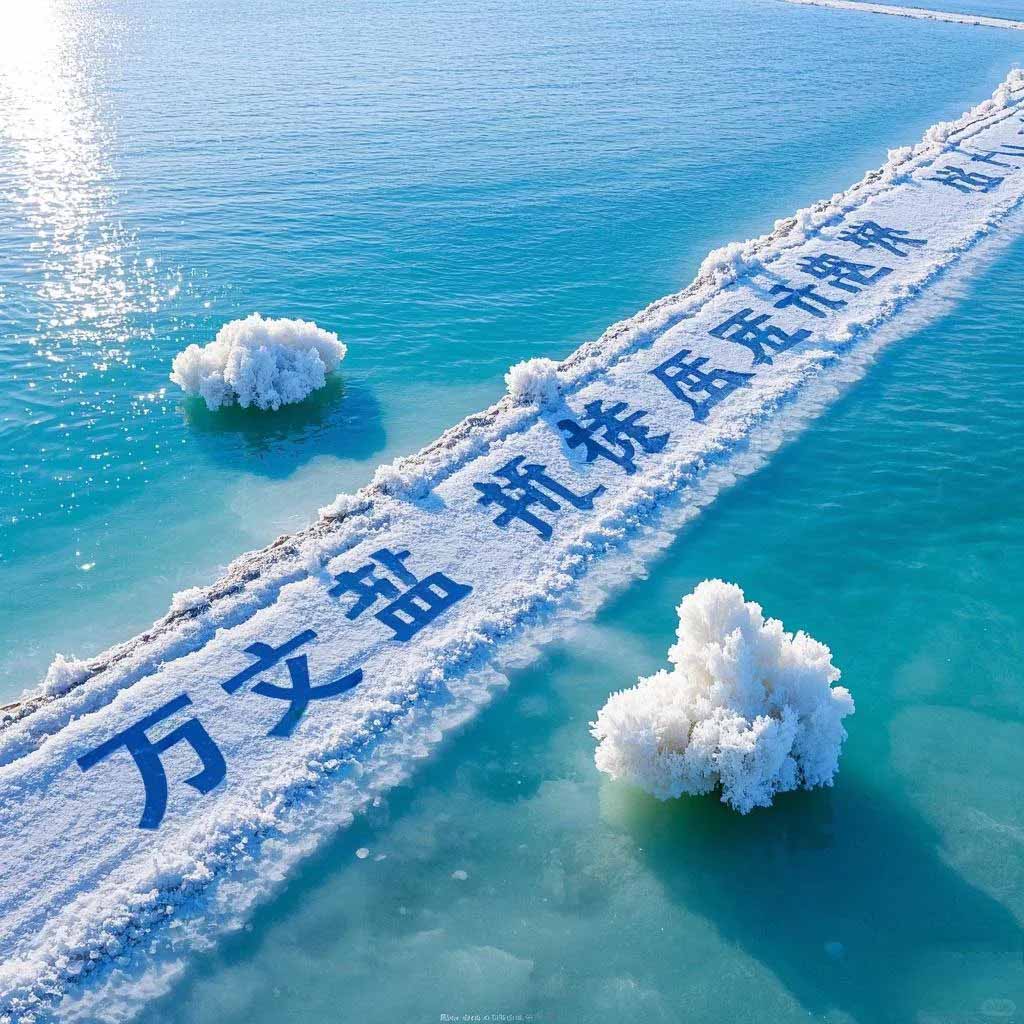
- G315 U-shaped highway: China’s most “photogenic” highway
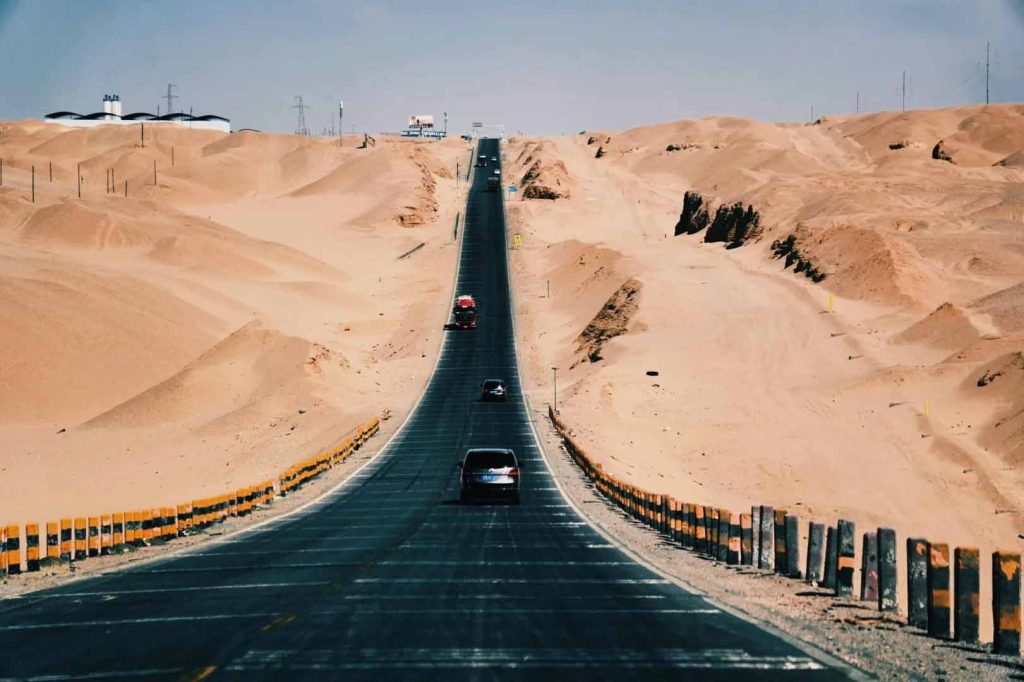
- Zhangye Danxia: Nature’s Palette and Geological Epic
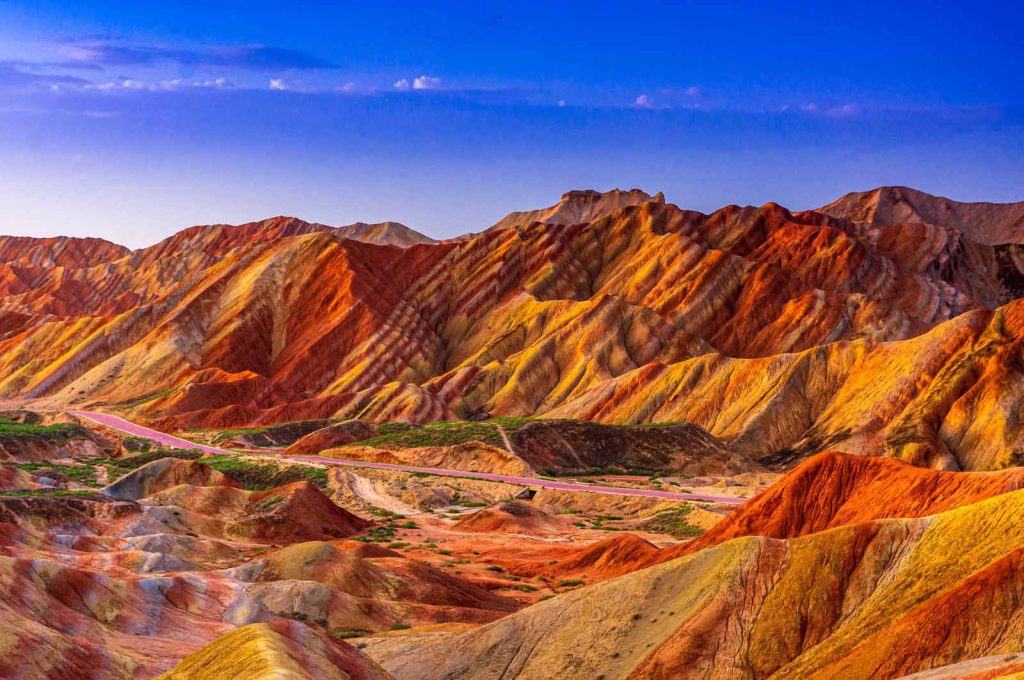
- The First Great Pass Under Heaven: Jiayuguan Scenic Area
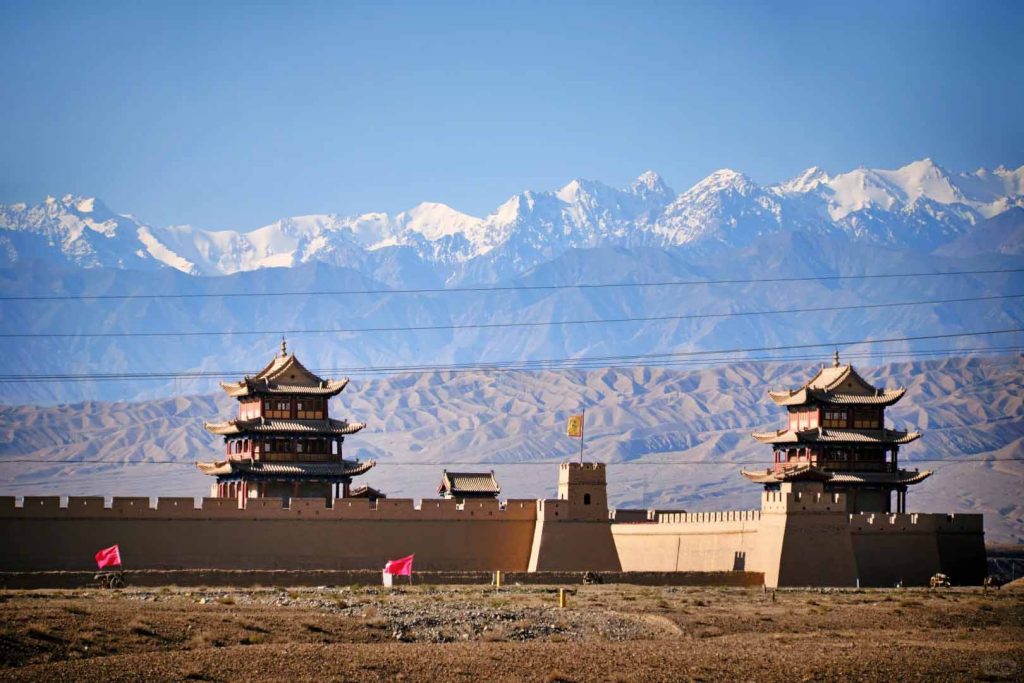
- Mingsha Mountain and Crescent Lake: A Desert Wonder
